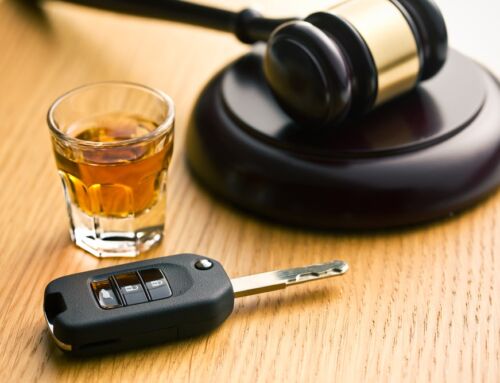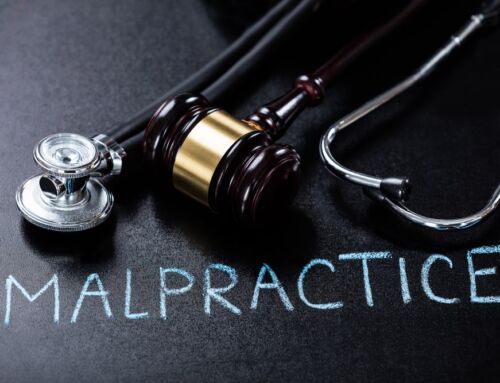When it comes to car accident liability, what is the difference between no fault states and tort states? And is Indiana a no fault state or a tort state?
The no fault system was designed to make the claims process easier and ensure that injured parties did not lose access to compensation even if they were at fault for an accident. However, no fault does not compensate for pain and suffering and you can only recover a percentage of your lost wages.
Indiana believes in accountability and is a tort state. Those who are injured due to the negligence of another driver can sue that driver to recover damages. In this article, we’ll discuss Indiana’s tort-based system and how it works. To learn more, contact a Lafayette IN car accident lawyer at Hall-Justice Law Firm today.
Auto Liability Insurance in Indiana
Every driver in Indiana is required to carry liability insurance. If they are at fault for an accident, the other driver will file a claim against their insurance and the insurance company will process that claim.
Each Indiana driver is required to carry policy minimums in the amount of:
- $25,000 for bodily injury liability per person;
- $50,000 for bodily injury liability per accident; and
- $10,000 for property damage
What is optional is:
- Uninsured or underinsured motorist coverage.
How Does Uninsured or Underinsured Motorist Coverage Work?
There are three cases in which your uninsured motorist coverage would pay out:
- The other driver is driving without liability insurance;
- The other driver flees the scene of the accident; or
- Your expenses are greater than the policy limits of the other driver. This is when your underinsured coverage would kick in depending on the amount of your coverage and the number of people who were injured in the collision.
While carrying uninsured and underinsured motorist coverage is optional, it is highly recommended. In fact, the State of Indiana requires all auto insurance carriers to offer uninsured motorist protection to their policyholders. The driver can elect to decline such coverage, but they must do so in writing. It is not advisable to reject uninsured or underinsured motorist coverage.
What Is PIP or Med-Pay Coverage?
Just because Indiana isn’t a no-fault state, doesn’t mean that you can’t carry PIP coverage. PIP stands for “Personal Injury Protection” and pays out in the event that you are injured in car accident. You can also get policies that cover your medical expenses for any injury you receive as a result of an accident — not just car accidents.
Filing a Claim in Indiana
In cases where a driver causes an accident with another driver, the injured driver will file a claim on that at-fault driver’s liability policy. This policy should cover expenses related to medical bills, pain and suffering, and lost time from work. When injured drivers suffer permanent impairments or disfigurements, the claims can max out the policy. In this case, an injured driver can sue the other driver directly. This is only useful to the extent that it will enable the injured person to access their own underinsured insurance policy or to obtain the at-fault driver’s assets that are worth drawing from. In many cases, gaining a judgment against an at-fault party does little more than force them into bankruptcy where their debt to the injured driver can be discharged in its entirety without any recovery at all.
Your attorney will research the at-fault party in a tort claim and recommend a direct lawsuit when appropriate and useful.
Understanding Indiana’s Comparative Fault System
Most states have some variation on a comparative fault rule. Accidents can have multiple causes and both parties may be partly to blame. Indiana operates on a modified comparative fault rule. That means that the fault of the claimant (or injured party) cannot be greater than the fault of the defendant (or at-fault party). In other words, the negligent defendant driver must be at least 51% at fault in order for the injured, less negligent driver, to obtain any money from the defendant. If the injured person is found to be 51% liable they will receive no compensation whatsoever. If the person is injured by a person working for the government Indiana legislators have chosen to protect the government more than their own citizens so even 1% fault of the injured person will mean that the injured person receives zero compensation for his injuries.
What if you are less than 51% at fault for the accident? Your damages will be reduced by your percentage of fault. For instance, if your damages are calculated at $10,000 and the other party is 90% at fault, you can recover only 90% of your damages or $9,000, which is still a significant amount of money. However, for that reason, the insurance company or the defendant’s attorney will attempt to blame you (at least in part) for the accident.
Talk to a Lafayette IN Car Accident Attorney
If you’ve sustained injuries in an accident, a car accident lawyer at Hall-Justice Law Firm can help to ensure that you are compensated fairly for your injuries. Contact us today to learn more.





